James Lowrie, 10 Jamaica St., 1878 - 1882
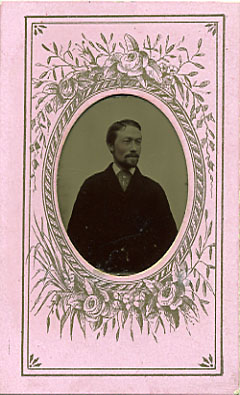
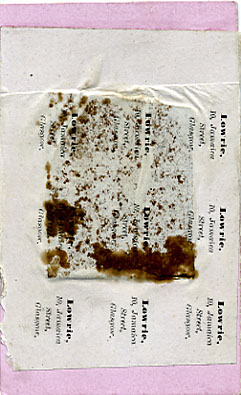


Lowrie seems to have specialized in tintype (ferrotype) images, so called because the emulsion was coated onto thin iron sheet. These were first produced in the late 1850s, but continued into the 1880s, and indeed in the hands of itinerant operators well into the 20th century. Tintypes, though inexpensive, suffered from the fact that copies could not easily be made, since no negative was involved. In an attempt to obviate this problem and compete with negative processes, cameras were developed in the 1860s which could take multiple small images on the one plate, and hence these 'gem tintypes' which very economically encased one of these small images in a cdv sized card.
the tintype image in first example above is larger than the standard gem tintype, and may be an early example, carrying as it does only the Glasgow address.
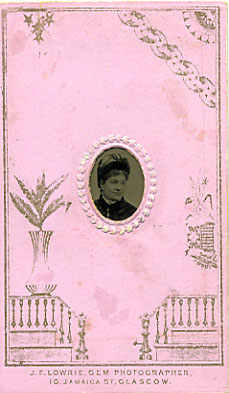
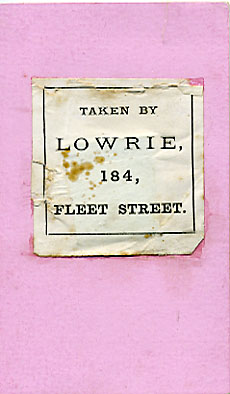
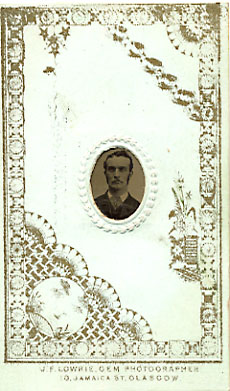
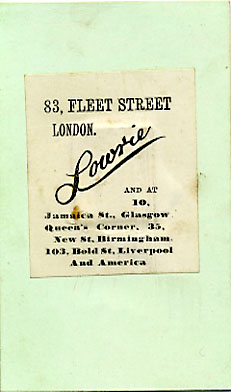
The examples above may have come from the London branch, though the Glasgow address is on the front. The surrounding decoration on these is carried out in gold ink. The first cdv below has had the original tintype carelessly removed, and a small paper photographic image substituted.
The sequence of these is not clear, though the first two have only the one London address. The second below is on a significantly shorter card.